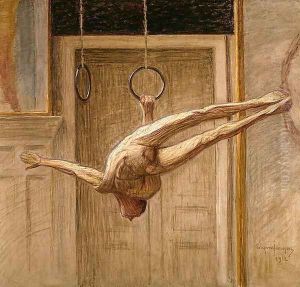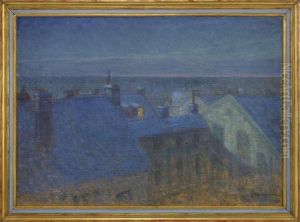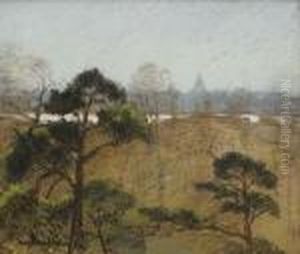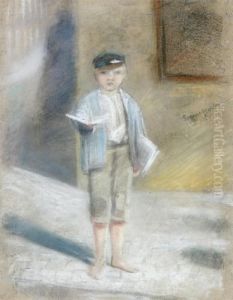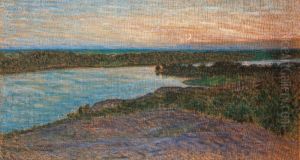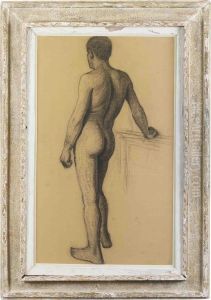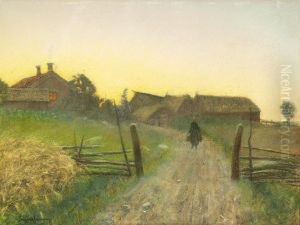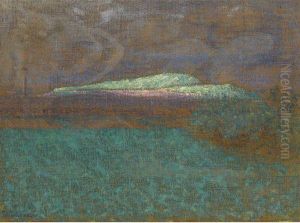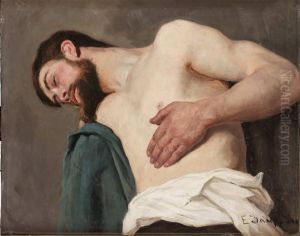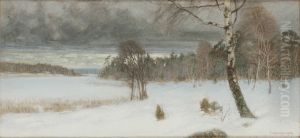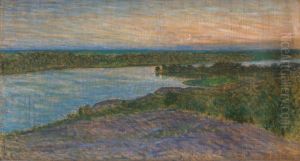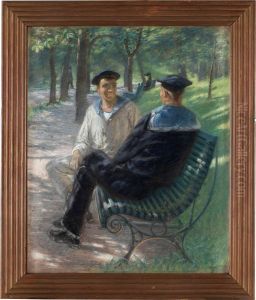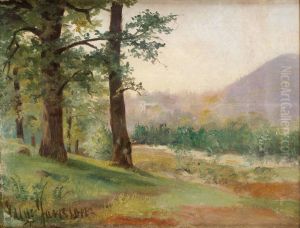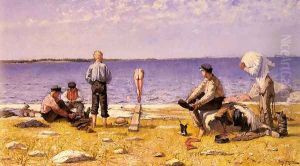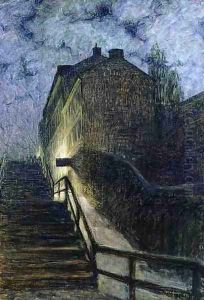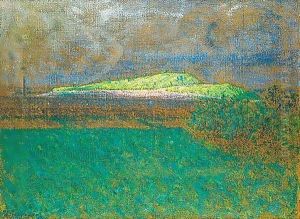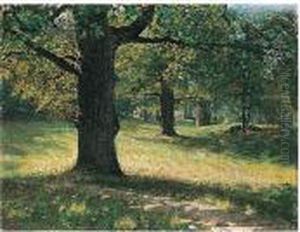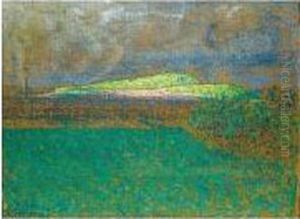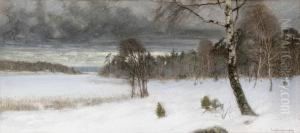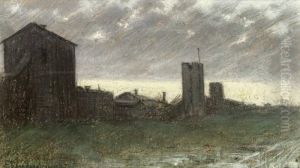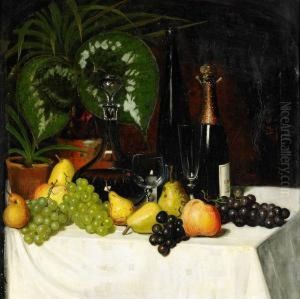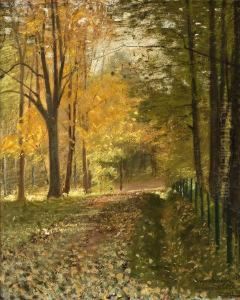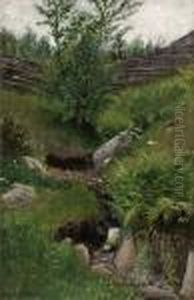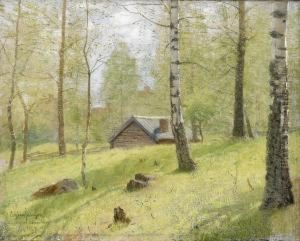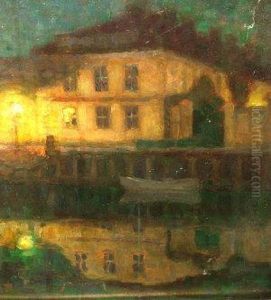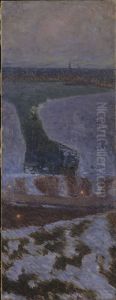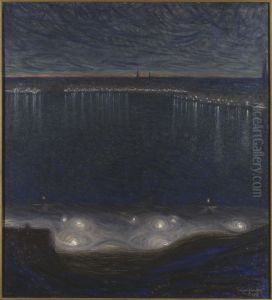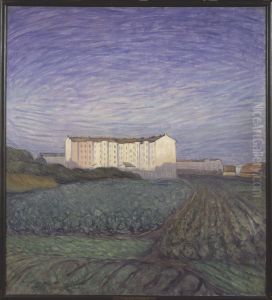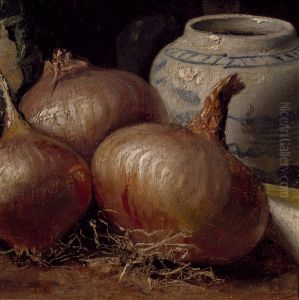Eugene Jansson Paintings
Eugene Jansson was a Swedish painter known for his large-scale works depicting the urban landscapes and nocturnal scenes of Stockholm, as well as his later works focusing on male nudes in atmospheric settings. Born on March 18, 1862, in Stockholm, Jansson emerged from a middle-class family and showed an early interest in art. He attended the Royal Swedish Academy of Arts, where he was influenced by the prevailing academic tradition of the time, which emphasized historical and mythological subjects.
However, Jansson's fascination with the urban environment of Stockholm led him to break away from these conventional themes. He became well-known for his 'blue period' during the late 1890s and early 1900s, in which he painted the cityscapes and waterways of Stockholm in a distinctive blue tone, a technique that highlighted the nocturnal mood and brought a mystical quality to his work. His painting 'Riddarfjärden' is one of the famous works from this period, showcasing his innovative use of color and light.
Around 1904, Jansson's focus shifted towards the human figure, and he began to produce a series of male nudes. These works were characterized by their robust form and the use of light to sculpt the figure, reflecting his ongoing interest in color and luminosity. Despite the potential for controversy, Jansson's nudes were received with critical acclaim, and he became a respected artist in Sweden, even being commissioned to paint portraits of notable individuals.
Over the course of his career, Jansson was involved with several artistic societies, including the Konstnärsförbundet (Artists' Association), which he co-founded. His work was exhibited widely in Sweden and abroad, and he received several awards and honors for his contributions to Swedish art.
Eugene Jansson remained a bachelor throughout his life and lived with his mother until her death. He was known to be a recluse, with his sexuality often discussed in the context of his art, particularly in relation to his male nudes. Jansson died on June 15, 1915, in Stockholm, leaving behind a legacy of being one of Sweden's most important painters at the turn of the 20th century. His works continue to be celebrated for their unique vision of Stockholm's cityscapes and their sensitive treatment of the male form.
